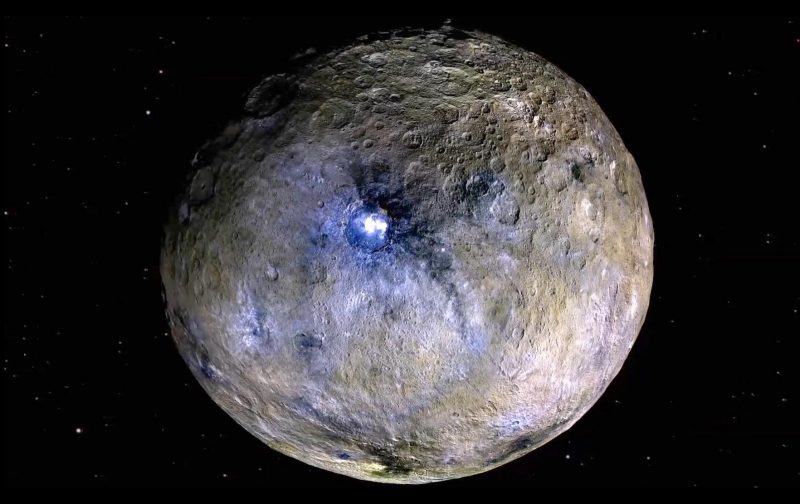
Help EarthSky keep going! Please donate what you can to our annual crowd-funding campaign.
What astronomers now characterize as dwarf planets might seem to be little more than large asteroids. But, as planetary scientists have been discovering, dwarf planets can share characteristics with full-sized planets; they are indeed actual worlds. That’s certainly true of distant Pluto, with its blue skies, high mountains, and red snows, not to mention its system of moons. Another example is the dwarf planet Ceres, which resides in the main asteroid belt between Mars and Jupiter. Despite being a lot smaller than the primary rocky planets like Earth or even Mercury, and a lot farther from the sun, we now know Ceres has its own unique and active geological history, too.
One of the most intriguing discoveries about Ceres has been evidence for ancient cryovolcanoes – an icy type of volcano that releases water, ammonia or methane instead of hot molten rock. Now, a new research study – a joint project between the University of Texas at Austin and NASA’s Jet Propulsion Laboratory (JPL) – suggests that shallow meltwater reservoirs of salty meltwater were able to stay liquid for millions of years, thanks to an insulating crust. The findings are related to the numerous bright spots seen on Ceres, in particular the largest ones in Occator Crater, which are sodium carbonate salt deposits thought to be the remnants of cryomagma – salty meltwater – that vaporized after reaching Ceres’ virtually airless surface.
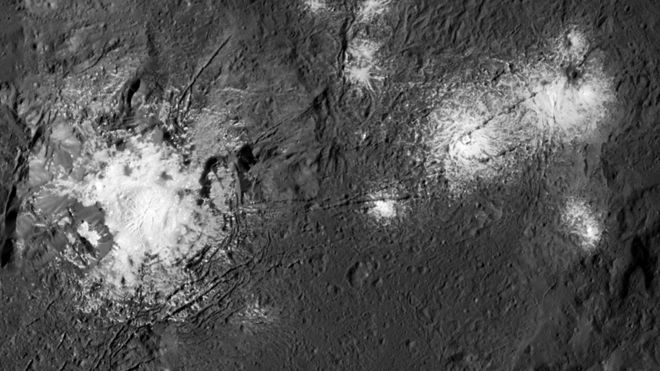

The new peer-reviewed research was published online on February 8, 2019, in the journal Geophysical Research Letters. From the summary:
We are testing the hypothesis that the bright spots in the center of Occator crater on Ceres are salts extruded from a large brine reservoir in the crust that melted during the asteroid impact that formed Occator Crater. The age difference between the crater and the salt deposits is approximately 16 million years and it is not clear if the brine can remain molten for such a long time. Our simulations show that an isolated impact-induced cryomagma chamber will cool in less than 12 million years. However, our simulations show that the crustal brine reservoir might communicate with a deeper brine reservoir in Ceres’ mantle. Such recharge could extend the longevity of the impact-induced cryomagma chamber beneath Occator Crater.
Cryovolcanism could help mix chemicals that produce the more complex molecules needed for life, such as on Jupiter’s moon Europa. Scientists are interested in studying how similar processes work on Ceres and whether they could could also create the molecules needed for life to begin. According to lead author Marc Hesse, an associate professor at the University of Texas at Austin Jackson School of Geosciences:
Cryovolcanism looks to be a really important system as we look for life. So we’re trying to understand these ice shells and how they behave.
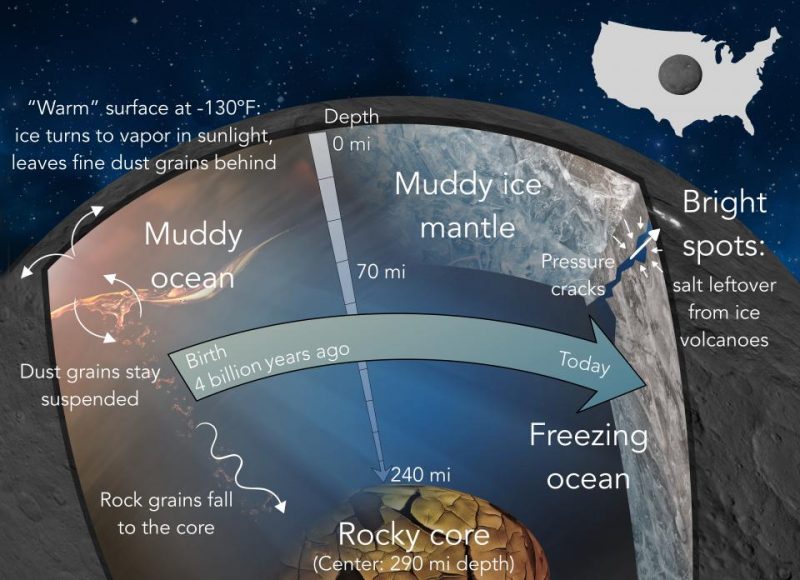
This doesn’t necessarily mean that life itself ever started on Ceres, but the initial chemical interactions needed certainly could have, at least. A subsurface supply of salty water below the surface would have been an ideal environment for that to occur.
The new study focused on the bright salt deposits in Occator Crater. While the crater is about 20 million years old, the deposits are as young as 4 million years old. The cryomagma is thought to have been produced by the impact that created Occator, and was originally estimated to have only been able to remain liquid for about 400,000 years after the impact. But if the deposits are only about 4 million years old, how did the meltwater reservoirs remain liquid so long? To answer that question, Hesse and Julie Castillo-Rogez, a planetary scientist at JPL, looked closer at Ceres’ crustal chemistry and physics. As Castillo-Rogez explained:
It’s difficult to maintain liquid so close to the surface. But our new model includes materials inside the crust that tend to act as insulators consistent with the results from the Dawn observations.
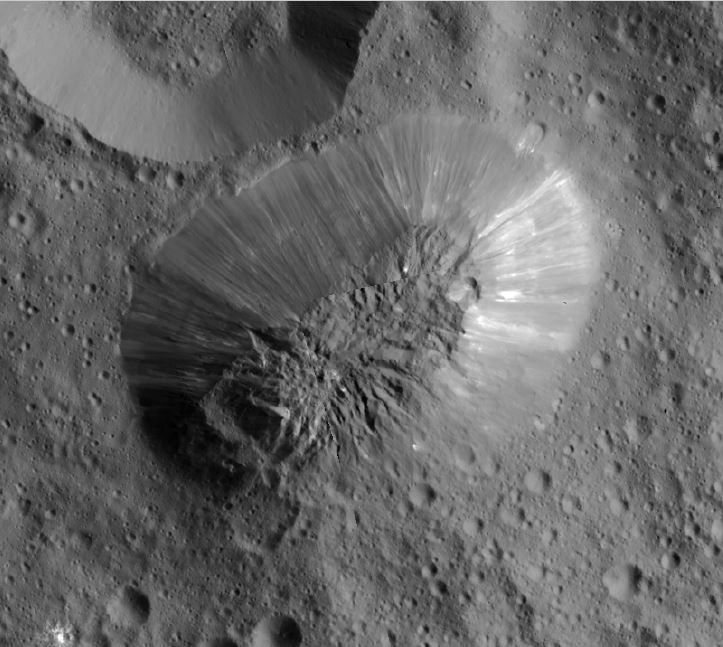
According to their calculations, the melt reservoir of cryomagma could have lasted for 10 million years. As Hess added:
Now that we’re accounting for all these negative feedbacks on cooling – the fact that you release latent heat, the fact that as you warm up the crust it becomes less conductive – you can begin to argue that if the ages are just off by a few million years you might get it.
The bright spots, including those in Occator, tend to be located in the or near the center of impact craters, which suggests that the impacts created the reservoirs of cryomagma, which then came to the surface through cracks. The salty water evaporated, leaving the salt deposits behind.
The new findings will help scientists better understand how Ceres evolved, according to Jennifer Scully, a planetary geologist at JPL:
They used more up-to-date data to create their model. This will help in the future to see if all of the material involved in the observed deposits can be explained by the impact, or does this require a connection to a deeper source of material. It’s a great step in the right direction of answering that question.
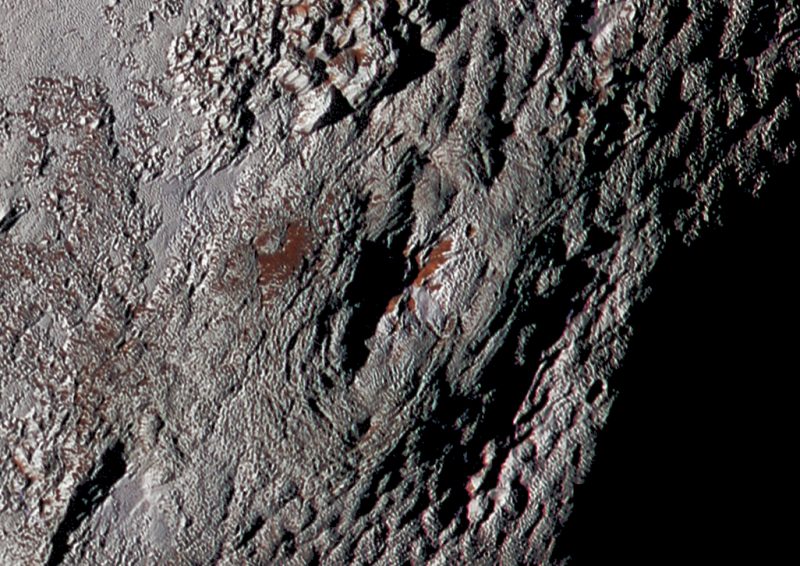
Cryovolcanism is rather common in the outer solar system – it is known to exist, and suspected to exist, on many icy worlds including Ceres, Titan, Pluto, Europa, Enceladus, Triton and others. This icy form of volcanism mimics the “hot” volcanism of planets and moons like Earth, Venus and Io, and shows that even small, cold bodies in the solar system can be surprisingly geologically active – Ceres itself is only 592 miles (952 km) in diameter.
Bottom line: The dwarf planet Ceres had subsurface meltwater reservoirs of salty water (cryomagma) for millions of years, the new research suggests. Whether any kind of primitive life could have ever evolved is unknown, but the environment could at least have allowed the chemistry to begin that would lead to the creation of the kinds of organic molecules that are the building blocks of life.
Source: Thermal Evolution of the Impact-Induced Cryomagma Chamber Beneath Occator Crater on Ceres











